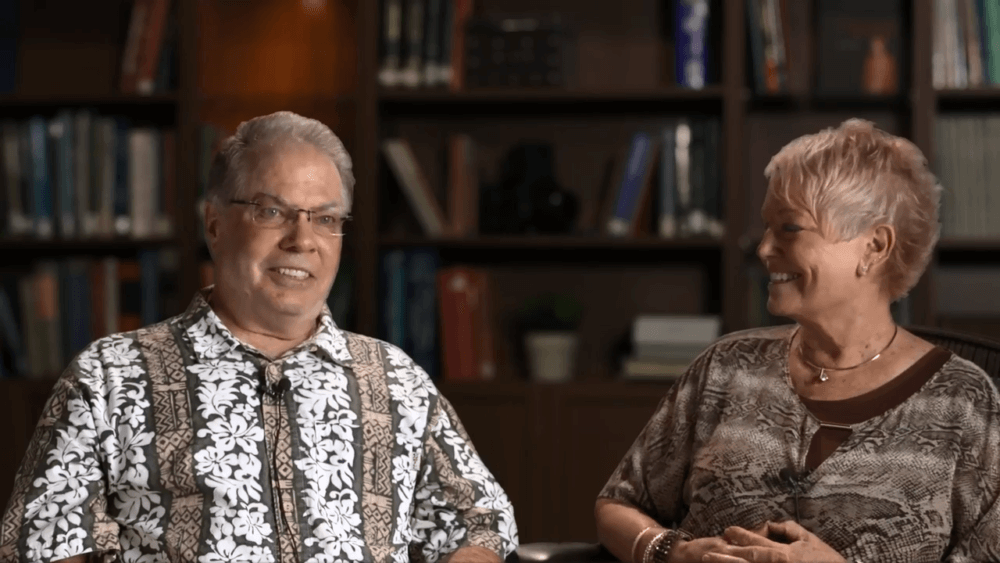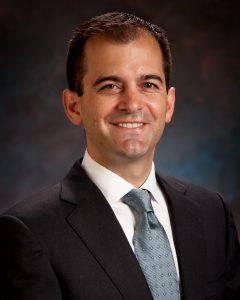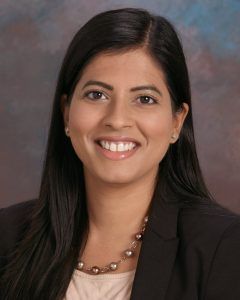
Barrow Parkinson’s Patient, Wife Say DBS Surgery Changed Their Lives
This article features a Barrow patient whose surgery was streamed live online as part of our efforts to advance the knowledge and practice of medicine in the neurosciences. Surgical video is a valuable educational tool for the medical community, but we hope it also serves as an informative resource for patients and their families. You can view a recording of this surgery here.
John Wagner whispered that he needed a minute, cleared his throat, and took a drink of water. His wife of 32 years, Judy, held his hand and asked if he was good.
“Yeah,” he replied.
“Parkinson’s makes you a little more emotional,” Judy offered when her husband became choked up talking about his uncle, Jimmy. “I don’t know what my problem is,” she joked, “but at least he has an excuse, huh?”
Like John, Jimmy had Parkinson’s disease.
“Every family get-together we would have, he would always be off to the side,” John remembered. “He would be shaking and drooling, and I just couldn’t watch him suffer. And I could see myself going down that same road.”
John removed his glasses, wiped his eyes, and let out a deep breath before continuing.
“That was something that I didn’t want to have happen,” he insisted. “My father suffered with MS, and I recall the way people would stare at him and talk about him in whispers when they were out in public, and I just couldn’t look forward to that.”
That’s why John jumped at the opportunity to have deep brain stimulation, or DBS.
DBS is a surgical treatment for Parkinson’s disease, essential tremor, and dystonia. A neurosurgeon places an electrode in a targeted area of the brain and connects it to a pacemaker-like device implanted in the chest. A neurologist programs the device, called a neurostimulator, to deliver electrical signals to specific areas of the brain. This regulates the abnormal signals that cause tremors and other symptoms of movement disorders.
“In clinic, I tell my patients that ‘DBS is new to you, but it’s nothing new,’” said Barrow neurosurgeon and DBS expert Dr. Francisco Ponce. “This therapy is neither experimental nor a treatment of last resort, but it is underutilized.”
Dr. Ponce said many primary care physicians who manage tremors with medication don’t know DBS is an option. Part of the mission of the DBS Program at Barrow has been to increase the awareness of the therapy and, by using the asleep technique, make it more accessible to people who can benefit.
John underwent his first DBS surgery with Dr. Ponce in April 2017 for tremors on the right side of his body. He had his second surgery in May 2018 for tremors on his left. He has two neurostimulators.
Living With Parkinson’s Disease
John, now 70 years old, was diagnosed with Parkinson’s disease about 10 years ago and about 18 years after being misdiagnosed with multiple sclerosis.
“My father had MS, my grandmother had MS, and her three siblings had MS,” he explained. “So they thought it was hereditary.”
At that time, he had slurred speech, dyslexia, and tingling in his legs. He’d also fallen down steps more than once.
I tell my patients that ‘DBS is new to you, but it’s nothing new.’ This therapy is neither experimental nor a treatment of last resort, but it is underutilized.
-Dr. Francisco Ponce, Barrow Neurosurgeon
When John developed tremors around 2008, he and his wife contacted Barrow Neurological Institute—where Judy had previously received treatment for a head injury. Barrow is home to the Muhammad Ali Parkinson Center.
“I guess after he was diagnosed with MS and I saw the results that his father went through before he passed, I almost thought that Parkinson’s would be easier on both of us,” Judy said. “But in reality, it’s a very debilitating disease also.”
Not only did John have to give up his woodworking hobby, but daily activities such as feeding and dressing himself had become difficult.
“I often joked about having to eat peas by putting honey on my knife and dipping the peas,” he added.
John also struggled with side effects from his Parkinson’s medications, particularly impulsive behaviors.
Deep Brain Stimulation Surgery: “It Changed Our Lives”
When John learned about DBS, he was eager to have the procedure. Judy had some reservations but relied on her strong faith and remained focused on the end goal: a better quality of life for her husband.
John described the first surgery as “a breeze.” He declined pain medication and had no complications.
“It changed our lives just having that first one because he was able to feed himself,” Judy said. “He was able to button his own clothes and take care of himself.”
But as the tremors on his right side subsided, the tremors on his left became more pronounced. John, his wife, and his medical team decided he would undergo a second DBS surgery in about a year.
Dr. Ponce cautioned John about potential speech and balance problems, which are known side effects of stimulating both sides of the brain for tremor. John sings for the Orpheus Male Chorus of Phoenix.
“I was weighing the chances of having a speech impediment versus the tremors, which were very noticeable not only in the hand but also the leg, and that would carry over into bobbing of the head,” he remembered. “So I was looking forward to the second surgery.”
Fortunately with DBS, adjusting the neurostimulator can reduce side effects. In fact, DBS was first used to treat the second side of the brain in people who had previously undergone thalamotomy—a surgical procedure that involved carefully destroying a part of the brain to treat tremors. People who underwent thalamotomy on one side were not candidates for that procedure on the other because it would result in permanent side effects.
John experienced some pain after the second surgery and his new neurostimulator has taken more time to fine tune, but he called it a success overall.
“When I get into an anxious state, the tremors are wanting to come back,” he said. “But for the most part, I can control them, whereas I wasn’t able to do that before.”
“The Dream Team”
He and Judy call their doctors at Barrow “the dream team.”
“Dr. Ponce is such a phenomenal surgeon, yet very caring about the patient and the family,” Judy said. “And Dr. Naomi Salins—she works, effortlessly, hours with us each time we come in.”
They also acknowledged DBS program coordinators Meg Lambert and Cindy McElfresh for providing education and guidance throughout the process. Learning about the surgery and the instruments used put Judy at ease—so much so that she was able to watch the live stream of her husband’s surgery.
“It was very interesting; I enjoyed it actually,” she said. “When Dr. Ponce walked into the room afterwards to let us know how it went, my niece and I were sitting there and both applauded.”
A few weeks later, John watched it himself.
“It was like having an out-of-body experience,” he recalled. “It was interesting, educational.”
John said he felt honored to be asked and to have the opportunity to help others considering DBS surgery.
“Each case has to be weighed on its own merits, of course,” he said. “They were very good about giving us the pros and cons before the surgery, but I would highly recommend it.”
Dr. Salins partially credits John’s success to the fact that he met all requirements for DBS when he was screened for candidacy.
“John is an excellent example of a great surgical outcome,” she said. “While DBS is not a cure or a fix for all aspects of Parkinson’s disease, it has certainly helped John improve his quality of life.”
John isn’t quite back to creating pens and letter openers with his lathe, but he believes woodworking is on the horizon. And Judy says John has become more engaging at gatherings with family and friends.
“He’s back to the John I knew before the Parkinson’s.”
To get a DBS second opinion, click here.


